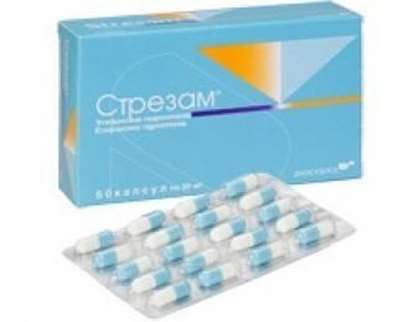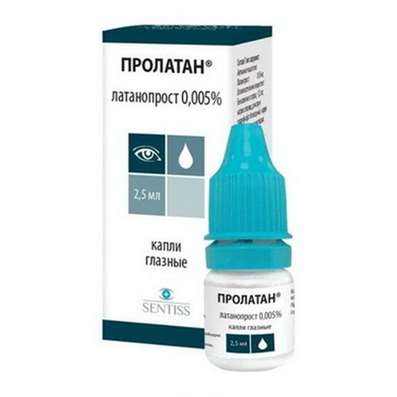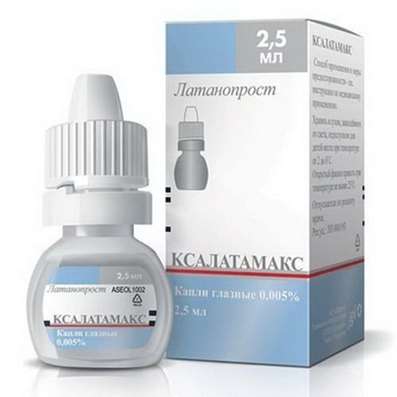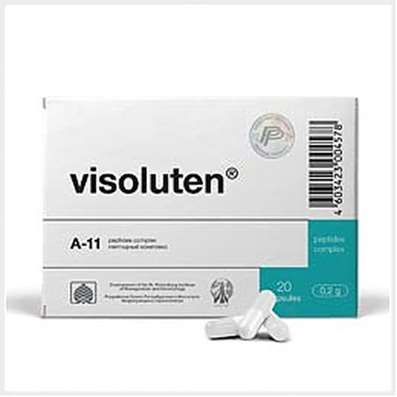Instruction for use: Venlaxor
I want this, give me price
Dosage form: tablets
Active substance: Venlafaxine*
ATX
N06AX16 Venlafaxine
Pharmacological groups:
Antidepressant [Antidepressants]
The nosological classification (ICD-10)
F32 Depressive episode: Adynamic subdepression; Astheno-adynamic subdepressive states; Asthenoadressive disorder; Astheno-depressive disorder; Asthenodepressive state; Astheno-depressive state; Major Depressive Disorder; Vyaloapatichesky depression with retardation; Double Depression; Depressive pseudodement; Depressive illness; Depressive mood disorder; Depressive disorder; Depressive mood disorder; Depressive state; Depressive disorders; Depressive syndrome; Depressive syndrome larviated; Depressive syndrome in psychoses; Depressed masks; Depression; Depression Depletion; Depression with the phenomena of inhibition within the framework of cyclothymia; Depression is smiling; Involutional depression; Involutionary melancholy; Involutional depression; Manic-depressive disorder; Masked Depression; Melancholic Attack; Neurotic depression; Neurotic depression; Shallow Depression; Organic depression; Organic depressive syndrome; Simple depression; Simple melancholic syndrome; Psychogenic depression; Reactive depression; Reactive depression with moderate psychopathological symptoms; Reactive depressive states; Reactive depression; Recurrent depression; Seasonal depressive syndrome; Severostatic depression; Senile Depression; Symptomatic Depression; Somatogenic depression; Cyclotymic depression; Exogenous depression; Endogenous depression; Endogenous Depressive Conditions; Endogenous Depression; Endogenous depressive syndrome
F33 Recurrent depressive disorder: Major depressive disorder; Secondary depression; Double Depression; Depressive pseudodement; Depressive mood disorder; Depressive disorder; Depressive mood disorder; Depressive state; Depressive syndrome; Depressed masks; Depression; Depression is smiling; Involutional depression; Involutional depression; Masked Depression; Melancholic Attack; Reactive depression; Reactive depression with moderate psychopathological symptoms; Reactive depressive states; Exogenous depression; Endogenous depression; Endogenous Depressive Conditions; Endogenous Depression; Endogenous depressive syndrome
Composition
Tablets - 1 table.
active substance:
venlafaxine (as hydrochloride) 37.5 / 75 mg
auxiliary substances: calcium hydrophosphate anhydrous; lactose anhydrous; sodium carboxymethyl starch; magnesium stearate; silicon dioxide colloidal anhydrous; iron dye red oxide (E172)
Description of dosage form
Light pink plosikotsilindricheskie tablets with dark pink impregnations, with a facet and a risk on one side.
Pharmachologic effect
Mode of action - antidepressant.
Pharmacodynamics
Venlafaxine, an antidepressant not chemically related to any class of antidepressants (tricyclic, tetracyclic or other), is a racemate of 2 active enantomers.
The mechanism of antidepressant drug effect is associated with its ability to potentiate the transmission of the nerve impulse in the CNS. Venlafaxine and its main metabolite, O-desmethylvenlafaxine (EFA), are potent serotonin and noradrenaline reuptake inhibitors and weak inhibitors of dopamine reuptake. In addition, venlafaxine and EFA reduce β-adrenergic reactivity both after a single administration and at a constant intake. Venlafaxine and EFA equally effectively affect the reuptake of neurotransmitters.
Venlafaxine does not have an affinity for muscarinic, cholinergic, histamine-H1 and α-adrenergic receptors in the brain. Venlafaxine does not suppress MAO activity. Has no affinity for opiate, benzodiazepine, phencyclidine or N-methyl-d-aspartate (NMDA) receptors.
Pharmacokinetics
Venlafaxine is well absorbed from the digestive tract. After a single dose of 25-150 mg Cmax in the blood plasma reaches 33-172 ng / ml for about 2.4 hours. It is subject to intensive metabolism on the first passage through the liver. His main metabolite is EFA. T1 / 2 venlafaxine and EFA - 5 and 11 hours, respectively. Cmax EFA in blood plasma 61-325 ng / ml is achieved approximately 4.3 hours after the administration of venlafaxine.
The binding of venlafaxine and EFA to blood plasma proteins is 27% and 30%, respectively. EFA and other metabolites, as well as nonmetabolized venlafaxine, are secreted by the kidneys.
With repeated administration of Css venlafaxine and EFA are achieved within 3 days.
In the range of daily doses of 75-450 mg venlafaxine and EFA have linear kinetics.
After taking the drug during meals, the time to reach Cmax in the blood plasma is increased by 20-30 minutes, but the Cmax and absorption values do not change.
In patients with cirrhosis of the liver, the concentrations in the blood plasma of venlafaxine and EFA are increased, and their elimination rate is reduced. With moderate or severe renal failure, the total clearance of venlafaxine and EFA is reduced, and T1 / 2 is lengthened. The decrease in overall clearance is mainly observed in patients with Cl creatinine <30 ml / min.
Age and sex of the patient do not affect the pharmacokinetics of the drug.
Indications for Venlaxor
Depression of various etiologies (treatment and prevention).
Contraindications
hypersensitivity;
simultaneous administration of MAO inhibitors (see "Interaction");
severe renal and / or hepatic impairment (GFR <10 mL / min);
established or suspected pregnancy;
lactation period;
age to 18 years (safety and efficacy for this age group are not proven).
With caution: recently transferred myocardial infarction; unstable angina; arterial hypertension; tachycardia; seizure syndrome in history; increased IOP; angle-closure glaucoma; manic conditions in the anamnesis; predisposition to bleeding from the skin and mucous membranes; initially reduced body weight; hyponatremia; hypovolemia; simultaneous reception of diuretics; suicidal tendencies; renal / hepatic insufficiency.
Application in pregnancy and lactation
The safety of venlafaxine during pregnancy is not proven, therefore the use during pregnancy (or presumptive pregnancy) is contraindicated. Women of childbearing age should be warned about this before starting treatment and should immediately seek medical attention in the event of pregnancy or planning pregnancy during drug treatment.
If the mother's treatment was completed shortly before the birth, a newborn can have withdrawal symptoms.
Venlafaxine and its metabolite EFA are excreted in breast milk. The safety of these substances for newborn babies is not proven, therefore, the use of venlafaxine during breastfeeding is not recommended. If you need to take the drug during lactation, you should decide whether to stop breastfeeding.
Side effects
Most of the side effects listed below depend on the dose. With long-term treatment, the severity and frequency of most of these effects is reduced, and there is no need to cancel therapy.
Depending on the frequency of occurrence, the following groups of side effects are distinguished: often (more than 1%); infrequently (0.1-1%); rarely (0.01-0.1%); very rarely (less than 0.01%).
From the nervous system: often - dizziness, asthenia, insomnia, nightmares, increased nervous excitability, paresthesia, hypertonic muscle, tremor, sedation; infrequently - apathy, hallucinations, myoclonus, syncope; rarely - convulsions, manic disorders, malignant neuroleptic syndrome.
From the CVS: often - increased blood pressure, hyperemia of the skin; infrequently - a decrease in blood pressure, postural hypotension, tachycardia; very rarely - a change in the QT interval, ventricular fibrillation, ventricular tachycardia (including ventricular fibrillation).
From the digestive system: often - decreased appetite, nausea, vomiting; infrequently - bruxism (involuntary grinding of teeth), increased activity of hepatic transaminases; rarely - hepatitis.
From the genitourinary system: often - reduced libido, erectile dysfunction and / or ejaculation, anorgasmia, menorrhagia, urination disorder; infrequently - urinary retention, violation of orgasm in women.
From the senses: often - a violation of accommodation, mydriasis, impaired vision; infrequent - a violation of taste perception.
From the side of the hematopoiesis: the frequency is unknown - agranulocytosis, aplastic anemia, neutropenia, pancytopenia.
Allergic reactions: infrequent - rash, photosensitivity; very rarely - multiforme exudative erythema (including Stevens-Johnson syndrome), anaphylaxis.
Laboratory indicators: infrequently - thrombocytopenia; rarely - increased bleeding time, hyponatremia; with long-term administration and use of high doses - hypercholesterolemia.
Other: often - loss of body weight, sweating (including night); infrequently - ecchymosis, weight gain; rarely - the syndrome of inadequate secretion of ADH, serotonin syndrome (nausea, vomiting, abdominal pain, diarrhea, flatulence, psychomotor agitation, tachycardia, hyperthermia, muscle rigidity, convulsions, myoclonus, sweating, oppression of consciousness of varying severity).
If there is a withdrawal syndrome: dizziness, headache, asthenia, fatigue, sleep disturbances (change in the nature of dreams, drowsiness or insomnia, difficulty falling asleep), hypomania, anxiety, increased nervous excitability, confusion, paresthesia, increased sweating, dry mouth, loss of appetite, nausea, vomiting, diarrhea (most of these reactions are slightly expressed and do not require treatment).
Interaction
The simultaneous use of MAO inhibitors and venlafaxine is contraindicated. The preparation of VenlaxorŽ can be started no less than 14 days after the end of therapy with MAO inhibitors. If a reversible MAO inhibitor (moclobemide) was used, this interval may be shorter (24 h). Therapy with MAO inhibitors can begin at least 7 days after the cancellation of VENLAKSORŽ.
Venlafaxine does not affect the pharmacokinetics of lithium.
With simultaneous use with imipramine, the pharmacokinetics of venlafaxine and its metabolite EFA does not change.
Haloperidol. The effect of haloperidol may be enhanced due to an increase in the level of the drug in the blood in a joint application.
With simultaneous use with diazepam, the pharmacokinetics of drugs and their major metabolites do not change significantly. Also, there was no effect on the psychomotor and psychometric effects of diazepam.
With simultaneous application with clozapine, an increase in its level in the blood plasma and the development of side effects (including epileptic seizures) can be observed.
With simultaneous use with risperidone (despite the increase in risperidone AUC), the pharmacokinetics of the sum of active components (risperidone and its active metabolite) did not change significantly.
Increases the effect of alcohol on psychomotor reactions.
On the background of taking venlafaxine, special care should be taken with electroconvulsive therapy. experience with venlafaxine in these conditions is absent.
Drugs metabolized by cytochrome P450 isoenzymes. The enzyme CYP2D6 of the cytochrome P450 system converts venlafaxine to the active metabolite of EFA. Unlike many other antidepressants, the dose of venlafaxine can not be reduced while being administered with CYP2D6 inhibitory drugs or in patients with a genetically determined decrease in CYP2D6 activity, since the total concentration of the active substance and metabolite (venlafaxine and EFA) will not change.
The main way to eliminate venlafaxine involves metabolism involving CYP2D6 and CYP3A4; therefore, special care should be taken with the appointment of venlafaxine in combination with drugs that depress both of these enzymes. Such drug interactions have not yet been investigated.
Venlafaxine is a relatively weak inhibitor of CYP2D6 and does not suppress the activity of the isoenzymes CYP1A2, CYP2C9 and CYP3A4; therefore, its interaction with other drugs in the metabolism of which these hepatic enzymes are involved should not be expected.
Cimetidine suppresses the metabolism of the first passage of venlafaxine and does not affect the pharmacokinetics of EFA. In most patients, only a slight increase in the overall pharmacological activity of venlafaxine and EFA is expected (more pronounced in elderly patients and in liver failure).
Clinically significant interactions of venlafaxine with antihypertensive (including beta-blockers, ACE inhibitors and diuretics) and hypoglycemic drugs have not been detected.
Medicines associated with blood plasma proteins. Binding to plasma proteins is 27% for venlafaxine and 30% for EFA. Therefore, does not affect the concentration of drugs in the blood plasma, which have a high degree of binding to proteins.
With the simultaneous administration of warfarin, the anticoagulant effect of the latter can be enhanced.
With simultaneous admission with indinavir, the pharmacokinetics of indinavir changes (with a 28% reduction in AUC and a 36% decrease in Cmax), and the pharmacokinetics of venlafaxine and EFA do not change. However, the clinical significance of this effect is unknown.
Dosing and Administration
Inside, with food.
The recommended initial dose is 75 mg in 2 divided doses (37.5 mg daily). If after several weeks of treatment there is no significant improvement, the daily dose can be increased to 150 mg (75 mg twice a day). If, in the doctor's opinion, a higher dose is required (severe depressive disorder or other conditions requiring in-patient treatment), 150 mg can be immediately given in 2 divided doses (75 mg twice a day). After this, the daily dose can be increased by 75 mg every 2-3 days until the desired therapeutic effect is achieved. The maximum daily dose is 375 mg. After achieving the necessary therapeutic effect, it is possible to gradually reduce the daily dose to a minimum effective level.
Supportive therapy and prevention of relapse: supportive treatment can last 6 months or more. The minimum effective doses used in the treatment of a depressive episode are prescribed.
Renal failure: with mild renal failure (GFR -> 30 mL / min), correction of the dosing regimen is not required. With moderate renal failure (GFR - 10-30 ml / min), the dose should be reduced by 25-50%. In connection with the elongation of venlafaxine T1 / 2 and its active metabolite EFA, such patients should take the entire dose 1 time per day. It is not recommended to use venlafaxine in severe kidney failure (GFR <10 ml / min), since there is no reliable data on such therapy. Patients on hemodialysis can receive 50% of the usual daily dose of venlafaxine after completion of hemodialysis.
Hepatic failure: with mild hepatic insufficiency (MF - <14 s), correction of the dosing regimen is not required. With moderate hepatic insufficiency (MI - 14 to 18 s), the dose should be reduced by 50%. It is not recommended to use venlafaxine in severe hepatic insufficiency, since there are no reliable data on such therapy.
Elderly patients: the old age of the patient does not require a dose change, but as with other medications, caution is needed in the treatment of elderly patients, for example, due to the possibility of impaired renal function. The lowest effective dose should be used. When the dose is raised, the patient must be under careful medical supervision.
Termination of VenlaxorŽ
At the end of taking VENLAKSORŽ, it is recommended to gradually reduce the dosage of the drug for at least a week, and monitor the patient's condition in order to minimize the risk associated with withdrawal of the drug (see below).
The period required to completely stop taking the drug depends on its dosage, the length of the course of treatment and the individual characteristics of the patient.
Overdose
Symptoms: changes in the ECG (prolongation of the QT interval, blockage of the bundle of the bundle, expansion of the QRS complex), sinus or ventricular tachycardia, bradycardia, hypotension, convulsive conditions, altered consciousness (decreased wakefulness). In case of an overdose of venlafaxine with concomitant intake with alcohol and / or other psychotropic drugs, a fatal outcome was reported.
Treatment: symptomatic. Specific antidotes are unknown. It is recommended continuous monitoring of vital functions (breathing and circulation); the use of activated carbon to reduce absorption of the drug. It is not recommended to induce vomiting due to the danger of aspiration. Venlafaxine and EFA are not excreted in dialysis.
Special instructions
Reversal of VenlaxorŽ: as with other antidepressant drugs, the sudden discontinuation of venlafaxine therapy - especially after high doses of the drug - can cause withdrawal symptoms, which is why it is recommended to gradually lower the dose before stopping the drug. The length of the period necessary to reduce the dose depends on the size of the dose, the duration of therapy, and the individual sensitivity of the patient.
When appointing VenlaxorŽ tablets, patients with lactose intolerance should take into account the lactose content of the preparation (30 mg in each tablet 37.5 mg, 60 mg in each 75 mg tablet).
In patients with depressive disorders, the likelihood of suicidal attempts should be considered before initiating any drug therapy. Therefore, to reduce the risk of overdose, the initial dose of the drug should be as low as possible, and the patient should be under careful medical supervision.
In patients with affective disorders in the treatment of antidepressants, incl. venlafaxine, hypomanic or manic conditions may occur. Like other antidepressants, venlafaxine should be administered with caution to a patient with a history of mania. Such patients need medical supervision.
Like other antidepressants, venlafaxine should be administered with caution to patients with epileptic seizures in the anamnesis. Treatment with venlafaxine should be interrupted if epileptic seizures occur.
Patients should be warned about the need to consult a doctor immediately if rashes, urticaria or other manifestations of allergic reactions occur.
In some patients, when taking venlafaxine, there is a dose-related increase in blood pressure, which is why regular monitoring of blood pressure is recommended, especially during the selection or increase of dosage.
A rise in heart rate may occur, especially during high doses. Care is advised with tachyarrhythmias.
Patients, especially the elderly, should be warned about the possibility of dizziness and discomfort.
Like other serotonin reuptake inhibitors, venlafaxine may increase the risk of hemorrhages in the skin and mucous membranes. Care should be taken when treating patients who are predisposed to such conditions.
When receiving venlafaxine, especially in conditions of dehydration or a decrease in blood volume (including elderly patients and patients taking diuretics), hyponatremia and / or a syndrome of insufficient secretion of antidiuretic hormone can be observed.
During the administration of the drug, mydriasis can be observed, and therefore it is recommended to control IOP in patients prone to its increase or suffering from an angle-closure glaucoma.
Venlafaxine has not been studied in patients who have recently had myocardial infarction and who suffer from decompensated heart failure. Such patients should be administered with caution.
Patients should be monitored to identify signs of drug abuse, especially for patients who have a history of such symptoms.
Women of childbearing age should apply appropriate methods of contraception during the administration of venlafaxine.
Despite the fact that venlafaxine does not affect psychomotor and cognitive functions, it should be borne in mind that any drug therapy with psychoactive drugs may reduce the ability to make judgments, thinking or performing motor functions. This should be warned by the patient before starting treatment. If such effects occur, the extent and duration of the restrictions should be determined by the physician. Also, alcohol is not recommended.
Release form
Tablets; 37.5 mg and 75 mg. For 10 tab. in a blister of PVC film and aluminum foil. By 3 bl. put in a pack of cardboard.
Conditions of leave from pharmacies
On prescription.
Storage conditions for Venlaxor
In the dark place at a temperature of no higher than 25 ° C.
Keep out of the reach of children.
Shelf life of Venlaxor
3 years.
Do not use after the expiry date printed on the package.

 Cart
Cart





